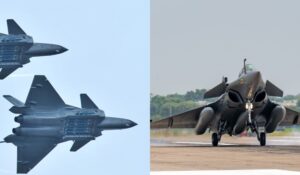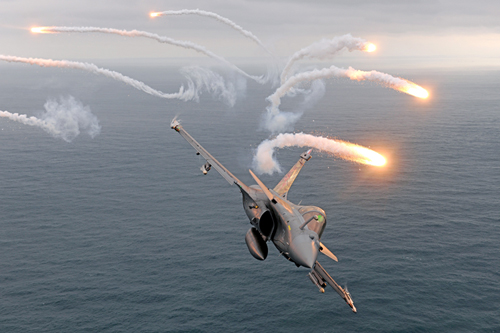
Ex-Navy Chief On Rafale Jets And Chinese Threat In Indian Ocean 2025
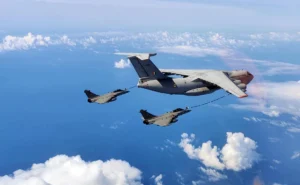
Introduction
In recent developments, India is progressing towards finalizing a significant defense agreement with France for the procurement of 26 Rafale Marine (Rafale-M) fighter jets. These advanced aircraft are intended for deployment on the INS Vikrant aircraft carrier, aiming to bolster the Indian Navy’s operational capabilities. The negotiations have reached their final stages, with expectations of Cabinet approval soon.
Concurrently, the Indian Navy remains vigilant over the growing presence of the Chinese People’s Liberation Army Navy (PLA Navy) in the Indian Ocean Region (IOR). Admiral Dinesh K. Tripathi, the Chief of Naval Staff, highlighted the continuous monitoring of Chinese naval activities, including warships and research vessels operating in the vicinity. This heightened vigilance is crucial to safeguarding India’s strategic interests in the region
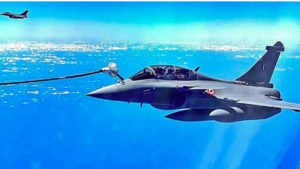
The maritime domain is fast becoming the epicenter of global strategic competition, and the Indian Ocean Region (IOR) is no exception. For India—a nation with a 7,500 km coastline and a dependency on sea routes for over 90% of its trade by volume—the security of this vast oceanic expanse is not just strategic, it’s existential.
Amid growing tensions in the Indo-Pacific, increasing Chinese naval activities, and a rapidly shifting geopolitical landscape, India is pushing ahead with one of its most critical defense modernization programs: the strengthening of its naval aviation capability through the acquisition of Rafale Marine fighter jets. At the same time, Indian naval leadership continues to sound the alarm about China’s increasing footprint in the IOR, calling for sustained vigilance, investment in maritime capabilities, and strategic partnerships.
Let’s unpack the evolving dynamics.
‘Normie’ School
Rafale Marine: A Game Changer for the Indian Navy
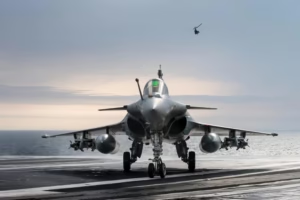
India is on the verge of finalizing a major defense acquisition deal with France to procure 26 Rafale Marine fighter jets—naval variants of the combat-proven Rafale aircraft. Valued at nearly ₹50,000 crore (about €5.5 billion), this deal is aimed squarely at augmenting the air arm of the Indian Navy, especially to bolster operations aboard INS Vikrant, India’s indigenously built aircraft carrier.
Why Rafale Marine?
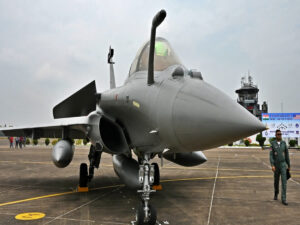
- Carrier Compatibility: Unlike land-based fighters, Rafale Marine jets are specifically designed for carrier operations, including ski-jump take-offs and arrested landings on a deck.
- Combat Proven: Rafales have seen action in Libya, Mali, Syria, and Afghanistan—bringing credibility and battle-tested systems to the Indian fleet.
- Interoperability with Indian Air Force: India already operates 36 land-based Rafale jets, and shared maintenance, training infrastructure, and spare parts logistics will streamline operations.
Initially, the Indian defense establishment considered integrating indigenous technologies like the Uttam AESA radar and Astra air-to-air missiles into these jets. However, the plan was shelved due to high integration costs and long testing timelines. The current package includes cutting-edge systems such as Meteor beyond-visual-range missiles and Scalp cruise missiles, significantly enhancing the Navy’s reach and lethality.
The Strategic Context: Chinese Expansion in the Indian Ocean

While India focuses on bolstering its firepower, another major concern is brewing under the surface—China’s growing maritime presence in the Indian Ocean.
According to Admiral R Hari Kumar, Chief of the Naval Staff, there are 3 to 6 Chinese warships operating in the Indian Ocean at any given time. Add to this Chinese research vessels, fishing fleets, and submarines, and the picture becomes even more concerning.
What’s Driving China’s Interest in the IOR?
- Energy Security: Over 80% of China’s energy imports pass through the Malacca Strait—a critical chokepoint within India’s strategic reach.
- Maritime Silk Road: The IOR is central to China’s Belt and Road Initiative (BRI), particularly with infrastructure investments in ports across Sri Lanka, Pakistan, Maldives, and East Africa.
- Military Footprint: China’s only overseas military base is in Djibouti, but increasing naval patrols suggest ambitions for broader blue-water operations.
China’s strategy appears to be a mix of “presence without provocation”—keeping its ships in international waters but close enough to matter, often under the guise of scientific research or anti-piracy operations.
India’s Response: Vigilance, Diplomacy, and Defense Modernization

India’s response to the Chinese presence in its backyard is evolving along multiple vectors:
1. Constant Surveillance

The Indian Navy has significantly improved its Maritime Domain Awareness (MDA) capabilities, using assets like:
- P-8I Poseidon maritime reconnaissance aircraft
- Unmanned systems and satellite surveillance
- Bilateral information sharing agreements with nations like the U.S., France, Japan, and Australia
2. Strengthening Naval Infrastructure
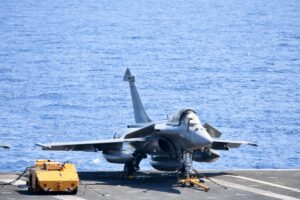
India is investing heavily in expanding naval infrastructure, such as:
- Developing new air and naval bases in the Andaman and Nicobar Islands
- Modernizing shipyards for indigenous warship construction
- Commissioning submarines under Project 75 and progressing towards nuclear submarine expansion
3. Diplomacy and Partnerships
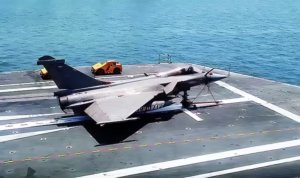
India is doubling down on multilateral partnerships like:
- QUAD (India, U.S., Japan, Australia)
- France–India Maritime Cooperation
- Joint patrols and naval exercises like Malabar, Varuna, and MILAN
A View from Experience: Ex-Navy Chief Admiral Arun Prakash Speaks Out
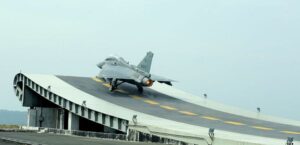
Former Chief of Naval Staff, Admiral Arun Prakash, recently published a hard-hitting opinion piece outlining the long-term strategic risks India faces.
Key Highlights from His Perspective:
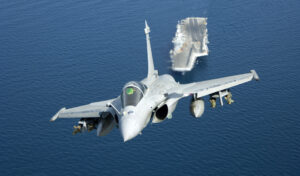
- Russia’s Waning Role: With Moscow leaning closer to Beijing and grappling with its own military setbacks, India can no longer rely solely on Russian defense support.
- U.S. as a Viable Option: Admiral Prakash suggests India needs to deepen defense ties with the U.S., which offers advanced technologies, logistics agreements, and joint R&D opportunities.
- Mind the Gap: He warns that India still lags behind China in terms of shipbuilding capacity, naval tonnage, and expeditionary reach.
His overarching message? India must play catch-up swiftly or risk being boxed in by Chinese influence in the Indo-Pacific.
Looking Ahead: The Path to Maritime Dominance

India’s acquisition of the Rafale Marine jets, growing vigilance over Chinese naval activity, and ramping up of indigenous capabilities signal a clear pivot toward maritime primacy.
Yet, challenges persist:

- Will India’s political leadership sustain long-term defense spending?
- Can domestic defense production keep pace with operational requirements?
- How will regional allies and partners align in the face of Chinese assertiveness?
One thing is certain: the next decade will define India’s maritime destiny.
The Indian Ocean is no longer a benign backyard—it’s a competitive arena. And India, backed by strategy, partnerships, and a powerful Navy, is preparing to assert its place as a formidable maritime power.
